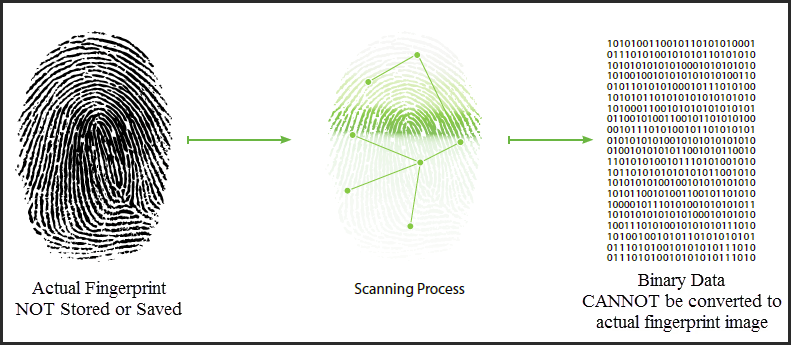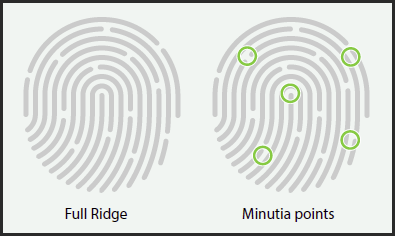Unlike the technology used by Automated Fingerprint Identification Systems (AFIS) for law enforcement purposes, ZK Technology’s biometric terminals, designed to facilitate the collection of time records pertaining to employees’ activities, do not capture and store actual fingerprint images. Instead, our fingerprint readers collect only sample data, convert it into binary data using mathematical algorithms and then store only a digital representation of the fingerprint (not an actual fingerprint image), from which it is virtually impossible to recreate the original image.

Significant differences between AFIS devices and ZK sensors include
Ridge vs. Minutia Analysis

ZK Technology is committed to providing the most secure biometric solutions possible and constantly searches for the latest advances in sensor technologies and software approaches to incorporate into its products.
No fingerprint images are saved!
Fingerprint images are converted to mathematical representations BEFORE storing.
Image size
ZK terminals use small, 3/4″ x 3/4″ optical sensors; AFIS devices require a full measure of the fingerprint, which is typically a rolled fingerprint image.
ZK Biometrics: Accuracy and Integrity
ZK biometric terminals are extremely accurate and virtually impossible to deceive, thanks to the integrated security components within are various sensors (ZK, Secugen, Lumidigm). These technologies combine to form the most powerful fingerprint security solution in the industry.
For maximum accuracy, the terminals have a dynamic optimization process, enabling high fingerprint image resolution and quality with low false acceptance rates. As well, some of ZK fingerprint scanners (i.e. Lumidigm) use a sub-surface multispectral technology that images below the outermost layer of the skin to the live layer where the true fingerprint resides. This means that conditions on the skin’s surface (such as calluses, dryness, dirt or contaminants, moisture, or the effects of aging) do not limit the ability of the sensor to capture fingerprint data. And with the technology’s anti-spoofing feature, any attempt to place a fake finger — rubber stamps, finger molds, latex fingers, etc. — is immediately rejected.
Incompatible with AFIS technology
Because of the different resolution, fingerprint size, and image enhancement processes of the two technologies, the data collected by a ZK terminals is virtually unusable by AFIS.
